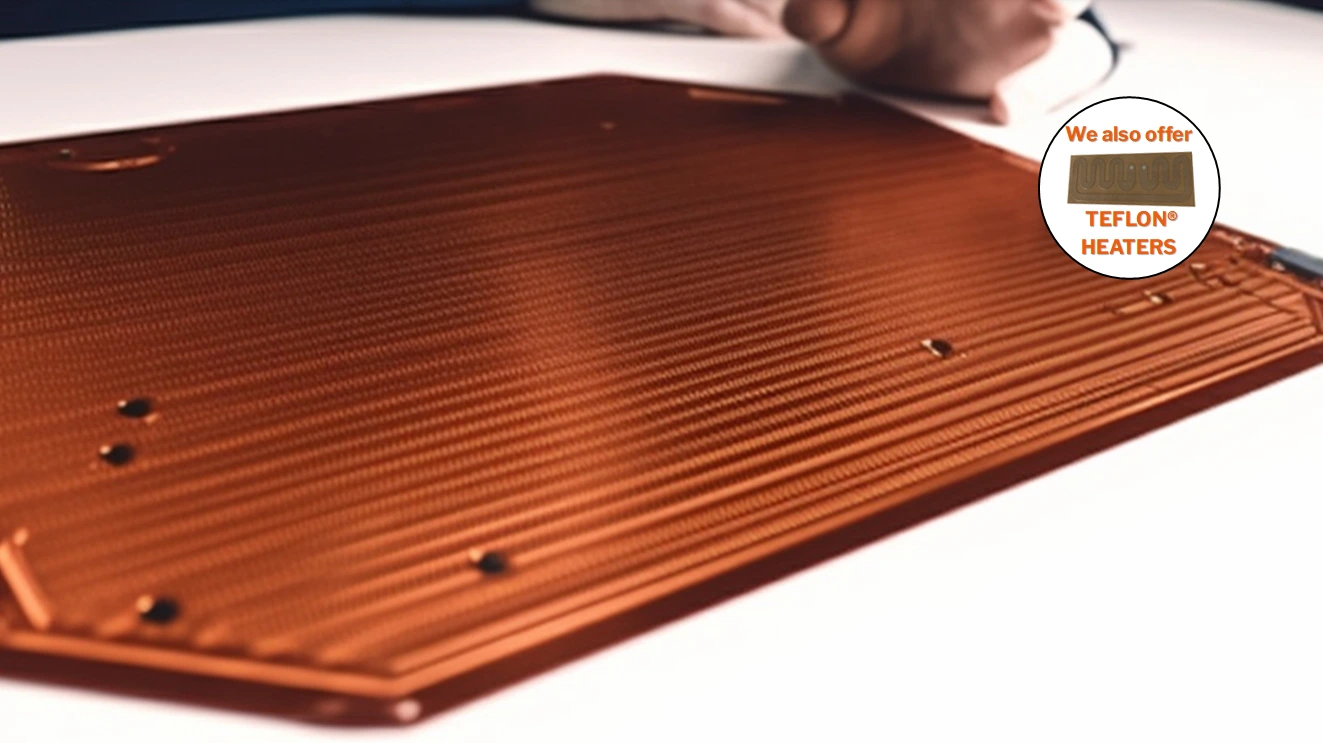As we continue to make strides in the realm of sustainable living, it’s no surprise that many of us are on a quest to find innovative ways to heat our homes without leaving an excessive carbon footprint.
In fact, you’re likely here because your subconscious desire for innovation has led you down this very path – seeking out the most sustainable heater available on today’s market.
Well, my fellow eco-conscious friends, I’m thrilled to tell you that you’ve come to the right place.
As a heating expert with a passion for sustainability and cutting-edge technology, I’ll be shedding light on various types of heaters and evaluating their environmental impact.
From solar-powered systems to efficient electric options or even those fueled by bioenergy, there’s plenty of choices to explore within the ever-evolving world of green heating solutions.
So buckle up as we embark on this journey together towards finding not only what will keep us comfortably warm but also contribute positively towards maintaining our beautiful planet!
Solar-Powered Heating Systems
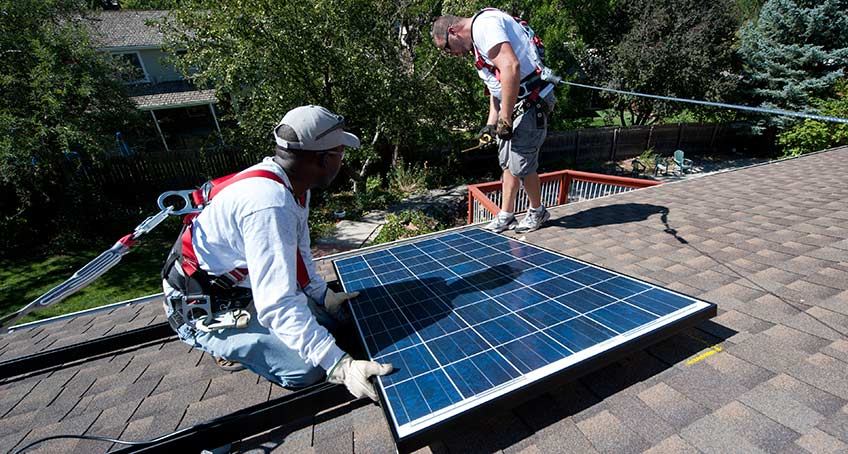
Photo by NREL
Solar-powered heating systems are a fantastic option for achieving sustainable home comfort. These innovative systems harness the power of the sun to provide clean, efficient heat with minimal environmental impact.
Two primary types of solar heating technologies stand out: solar water heating and passive solar design. Both options have their own unique advantages, making them appealing choices for homeowners seeking an eco-friendly solution.
Solar water heating systems use specially designed panels to capture sunlight and convert it into thermal energy used for heating water. This hot water can then be distributed throughout your home as needed, providing warmth while minimizing your reliance on fossil fuels or electricity from non-renewable sources.
Passive solar design takes a different approach by incorporating architectural features that maximize natural light and heat within the living space. This method relies on strategic window placement, insulation materials, and building orientation to create comfortable indoor temperatures without relying on any additional mechanical equipment.
Exploring these two environmentally friendly solutions is essential when considering how best to invest in sustainability at home. Solar water heating offers incredible potential for long-term savings on utility bills, while passive solar design creates cozy spaces filled with natural light that invite relaxation and rejuvenation.
By embracing either—or both—of these groundbreaking approaches to residential heating, you’ll not only reduce your carbon footprint but also enjoy greater satisfaction in knowing you’re contributing positively to our planet’s well-being.
Energy-Efficient Electric Heaters
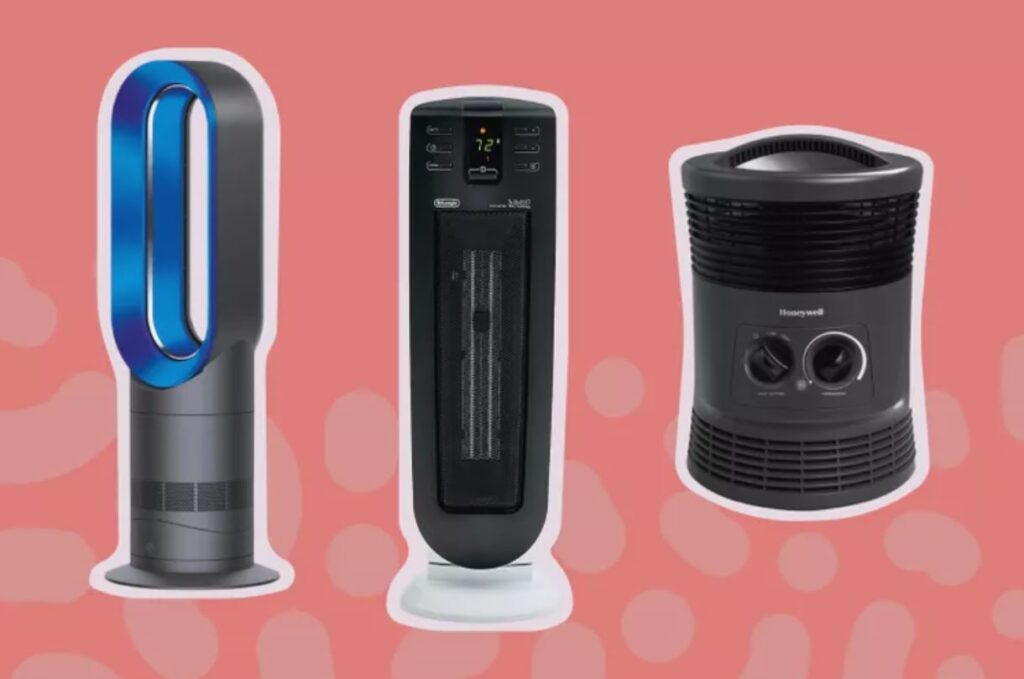
Photo by TreeHugger
As a sustainable heating expert, I’m always on the lookout for innovative technology that can help us reduce our energy consumption while still keeping our homes warm and comfortable.
One such innovation is smart thermostats, which have revolutionized how we control our home’s temperature. These devices allow you to set specific temperatures for different times of the day or even control your heating system remotely through an app on your smartphone. By optimizing your heater’s usage according to your needs and schedule, smart thermostats can significantly lower energy waste and utility bills.
Another cutting-edge technology in the world of sustainable heating is infrared heating. Unlike conventional heaters that heat the air around them, infrared heaters directly warm up objects and people within their range by emitting invisible light waves that are absorbed as heat. This means that they work more efficiently than traditional systems since there’s no wasted energy on warming unoccupied spaces or constantly reheating cool air circulating throughout a room.
Moreover, infrared heaters offer several health benefits like improved blood circulation and relief from muscle pain due to their penetrative warmth.
Embracing these advanced technologies could lead to substantial savings in both money and resources without compromising comfort levels at all.
Investing in energy-efficient electric heaters with features like smart thermostats and infrared heating capabilities will not only create a cozier living space but also contribute positively towards reducing our overall environmental impact.
So why wait? It’s time to consider upgrading your current heating system into something smarter, greener, and ultimately better for everyone involved!
Bioenergy-Fueled Heating Options

Photo by Greenfluidics
Diving deeper into the world of sustainable heating, we now explore an area that holds immense potential for innovation and environmental benefits: bioenergy-fueled heating options.
As we strive to find solutions that not only provide efficient warmth but also protect our planet, it’s crucial to look beyond conventional electric heaters and focus on harnessing the power of renewable resources.
One such promising avenue is algae-based heating systems, which offer myriad bioenergy benefits.
Algae are remarkable organisms capable of rapid growth while consuming carbon dioxide and generating oxygen as byproducts. This unique characteristic allows them to serve as a clean source of energy when harvested effectively.
By converting the lipids found in algae into biodiesel or biogas, they can fuel boilers or furnaces designed explicitly for this purpose. This innovative method results in reduced greenhouse gas emissions and less reliance on fossil fuels while still providing ample heat for homes and commercial spaces.
The future may indeed be green – literally! – with algae at the forefront of revolutionizing how we generate heat sustainably.
The possibilities are limitless as researchers continue to explore new ways to optimize algal production and implement these eco-friendly alternatives in various applications worldwide.
So let us embrace these exciting innovations as vital steps towards a more sustainable way of living, where comfort meets care for our precious environment.
Geothermal Heating Solutions
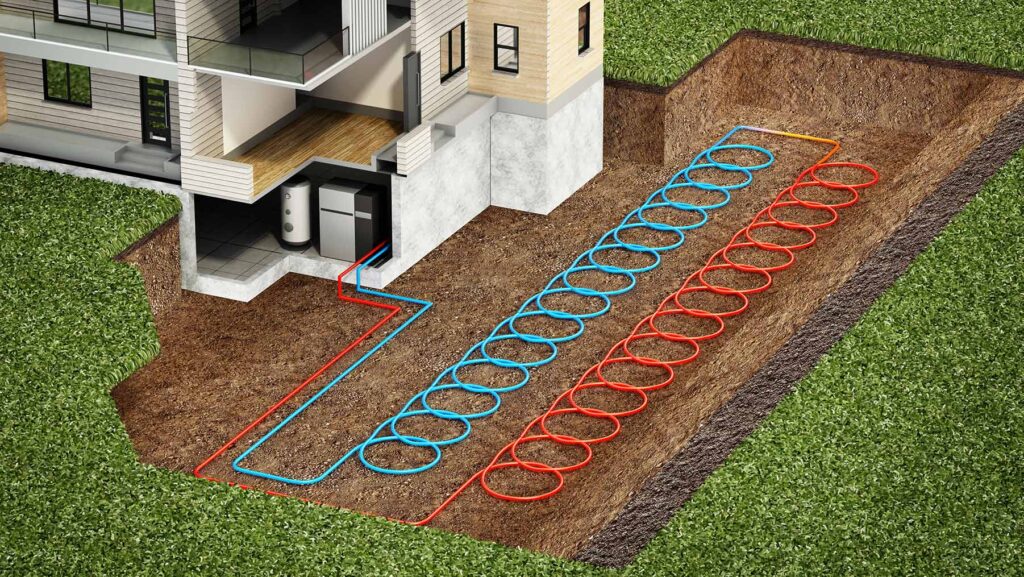
Photo by RMI
Geothermal heating solutions are emerging as one of the most sustainable and efficient ways to heat homes and commercial spaces. Harnessing the Earth’s natural warmth, these systems utilize energy from beneath our feet, tapping into a virtually limitless supply.
With numerous geothermal benefits, it’s no wonder that more people are turning to this innovative technology for their heating needs. When considering cost analysis, geothermal heating proves itself not only as an environmentally friendly option but also as a long-term investment. While the initial installation costs may be higher than traditional heating methods, the savings on monthly utility bills become apparent quite quickly.
Geothermal systems require less maintenance and have longer lifespans compared to other heating alternatives, meaning you’ll reap the rewards of your decision year after year. As we seek out new ways to reduce our carbon footprint and protect our planet, embracing geothermal heating offers us a chance to make positive strides towards sustainability.
By utilizing the power stored within our very own Earth, we can efficiently warm our living spaces while minimizing harm to the environment. The shift towards greener technologies begins with choices like these – choosing geothermal is undoubtedly a forward-thinking approach in today’s world of innovation.
Heat Pumps: Air-To-Air And Ground Source
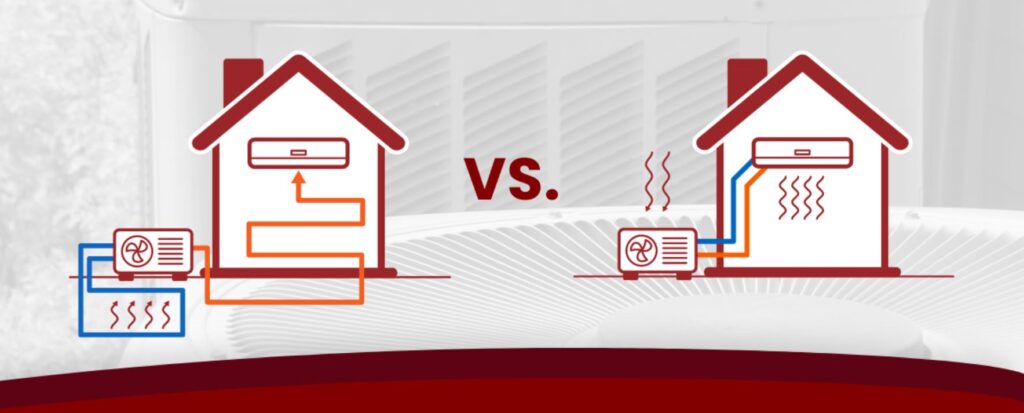
Photo by Capital Heat Inc.
Heat pumps, particularly air-to-air and ground source systems, are considered the most sustainable heaters in today’s market. In fact, they’re quickly becoming popular among eco-conscious homeowners who desire energy-efficient solutions for their heating needs.
Air-to-air heat pumps work by extracting warmth from outdoor air and transferring it indoors, while ground source heat pumps make use of the stable temperatures found beneath our feet. Both technologies boast impressive efficiency ratings that not only reduce your carbon footprint but also lower your energy bills.
When considering air-to-air benefits, these heat pump systems stand out due to their ability to provide both heating and cooling functions with a single unit. With an efficient system like this, you can easily maintain year-round comfort within your home or workplace without relying on multiple devices or burning fossil fuels. Furthermore, advanced models offer options such as smart controls and zoning capabilities – features that empower users to have greater control over their indoor climate while optimizing energy consumption.
Ground source heat pumps truly shine when it comes to efficiency. These systems harness the earth’s natural thermal properties to deliver consistent warmth throughout colder months, all while using minimal electricity. Additionally, since they don’t rely on outside air temperature fluctuations for optimal performance, ground source units tend to be more reliable than their counterparts in extreme weather conditions.
It’s no wonder many forward-thinking individuals are turning towards this innovative solution for sustainable heating; after all, what better way is there to stay warm during winter than by tapping into nature itself?
Comparing Environmental Impacts And Sustainability Factors
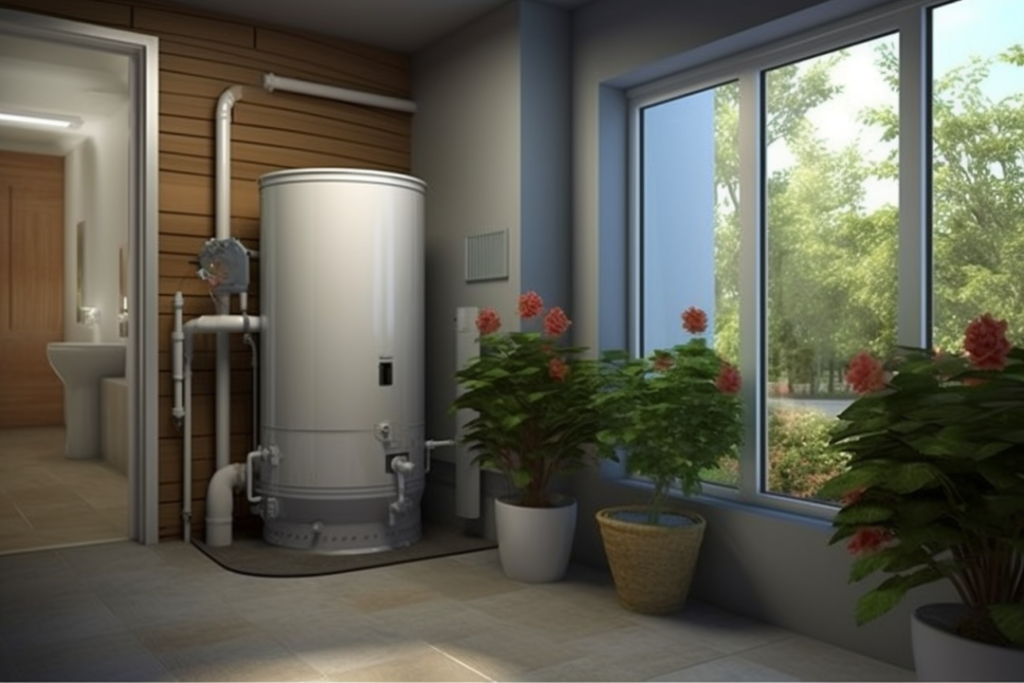
Photo by United Solar
When it comes to comparing sustainable heater types, we must evaluate their environmental impacts and sustainability factors.
Reducing carbon emissions is a key priority in the quest for greener heating solutions, as well as considering energy efficiency and renewable resources.
The most popular options include solar-powered heaters, heat pumps, biomass boilers, and geothermal systems.
Solar-powered heaters harness the sun’s energy to generate heat, which makes them an excellent choice for those looking to minimize environmental impact. As long as sunlight is available, these heaters can provide a steady source of warmth with virtually zero carbon emissions.
Heat pumps are another efficient option that utilize ambient air or ground temperature to warm your home; they draw less power than traditional electric heaters while providing consistent comfort levels.
Biomass boilers burn wood pellets or other organic materials to produce heat – this process releases fewer greenhouse gases compared to fossil fuel-based systems, though it is not completely emission-free.
Geothermal systems tap into the Earth’s natural warmth by circulating fluid through pipes buried underground before transferring this captured heat back indoors. This method boasts impressive eco-credentials: low-carbon operations coupled with high energy efficiency rates make it one of the best choices for green-minded individuals seeking innovation in home heating solutions.
So next time you’re researching ways to keep your space cozy while minimizing environmental harm, remember that there are plenty of innovative and sustainable alternatives out there just waiting for you to discover!
Conclusion

Photo by Northern Health Stories
In conclusion, it’s essential for us to consider the sustainability and environmental impacts of our heating choices.
While solar-powered systems and geothermal solutions offer great potential for reducing emissions, bioenergy-fueled options provide an interesting alternative that can help balance energy demand with supply.
As a sustainable heating expert, I recommend evaluating your specific needs and location before choosing the most appropriate option.
Ultimately, prioritizing eco-friendly alternatives benefits not only our wallets but also future generations and the planet as a whole.
